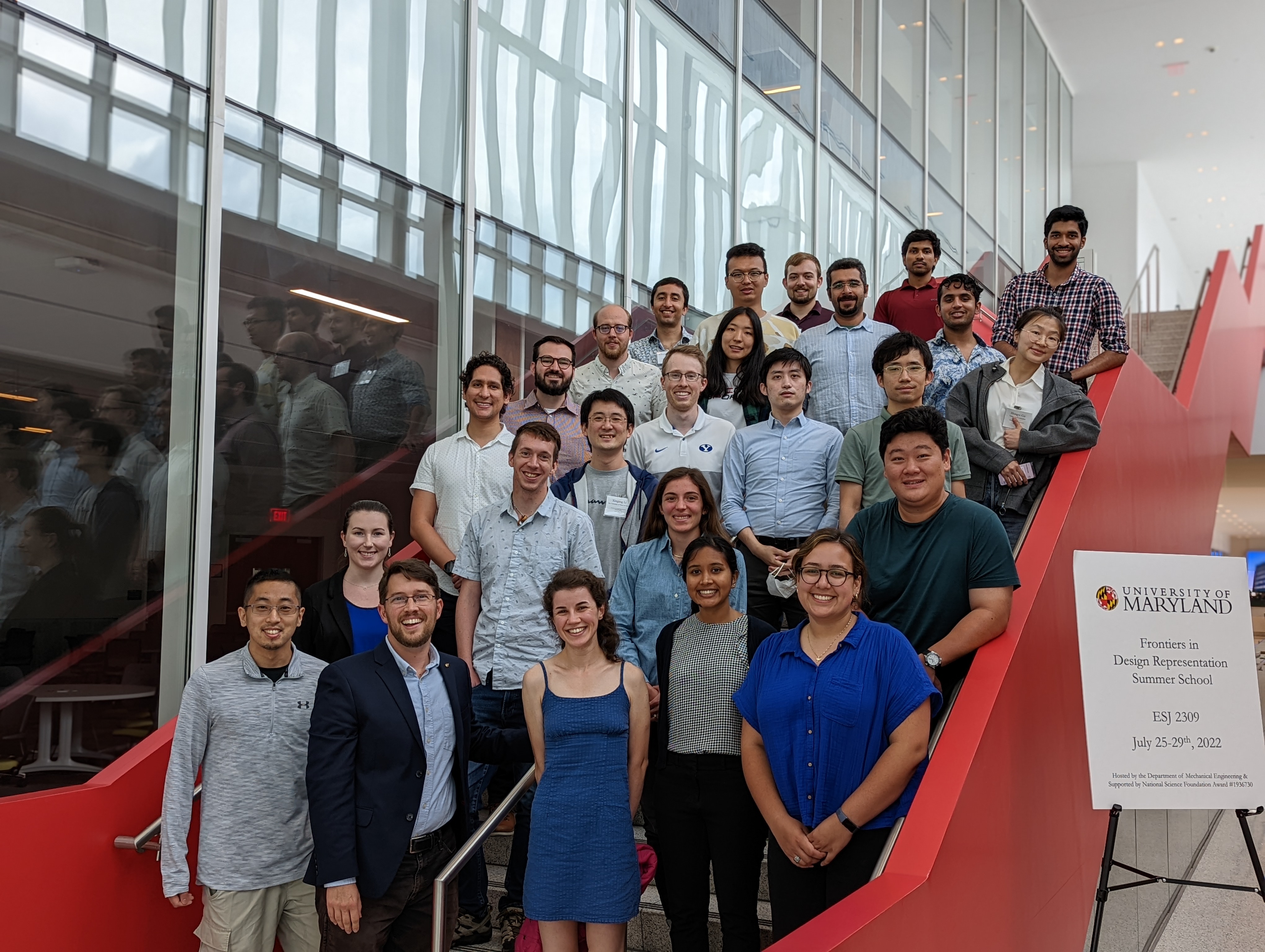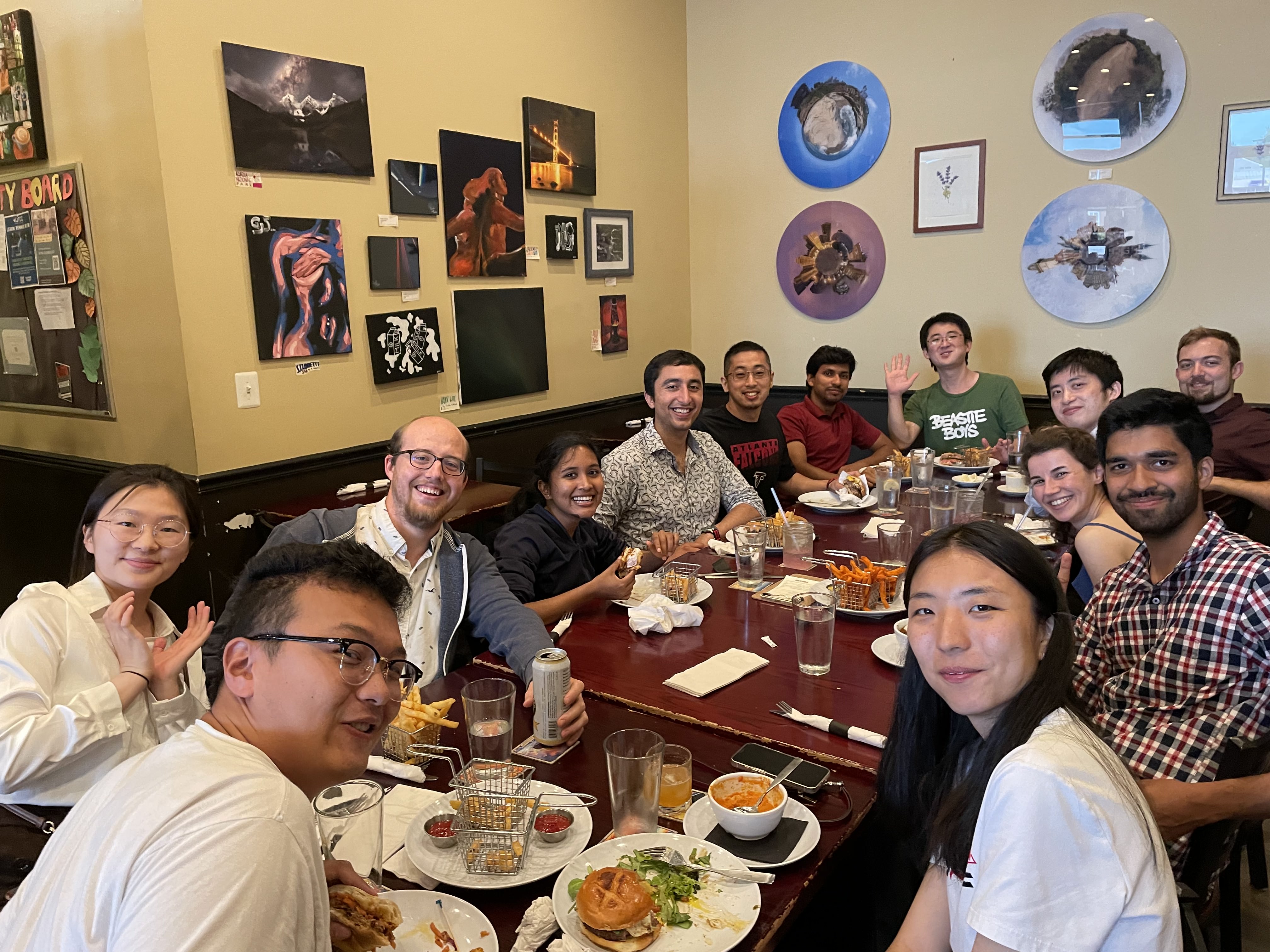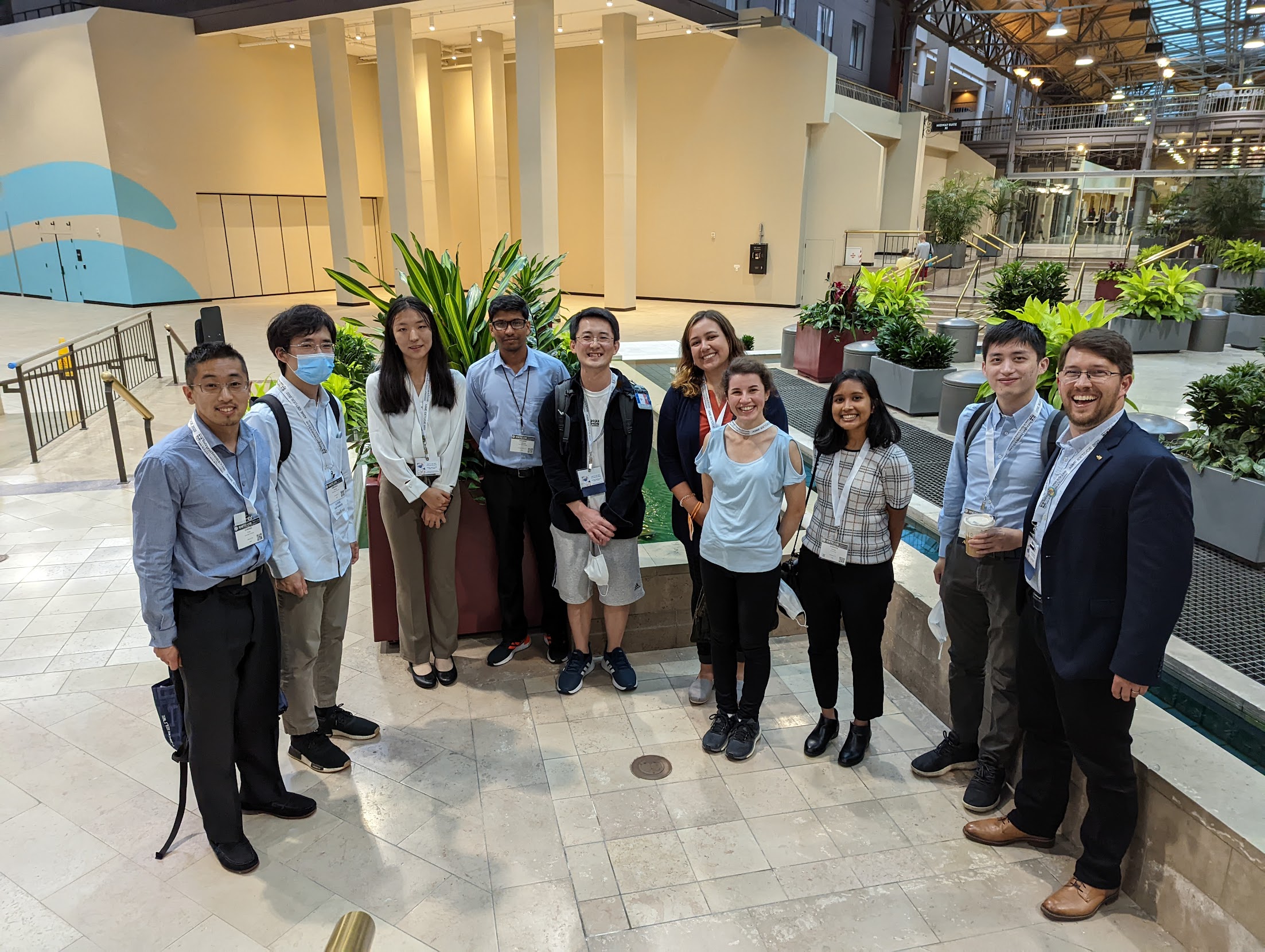Year in Review: 2022
Summary: A copy of my end of year message to my lab, where I review the key events from 2022.
I want to thank everyone, as I often do, for all of your hard work this year and for making this job such a fun and rewarding experience for me. Being able to spend time with my students and staff is one of my job’s real pleasures and enriches my quality of life in ways that are hard to express. A lot of exciting things have happened since last year and I hope to summarize and celebrate your achievements below. Thanks again for all that you do for me and each other!
The People
This year we were able to do much more in person, including a lab board gaming retreat, as well as going to a few conferences, which has been a welcome change compared to previous years. We were joined this year in August by Nathan Hoffman (a former UMD undergrad, who did his M.S. at U.Conn with Hongyi Xu before coming back to UMD) who will be helping on our NIH-funded project on Physics-Informed ML models for prostate cancer biopsies, and Matthew Keeler (a UMD undergraduate staying for his M.S. here at UMD) who will be joining a joint NSF-funded project that extends our collaborations with Scarlett Miller, based on the work that Faez did for his thesis. We were also joined in November by Dr. Xuan Liang, a new post-doctoral associate who wil be helping our NIH-funded project with Ryan Sochol, Axel Krieger, and the UM school of medicine. We were also joined over the summer by Allen Yang, a High-School intern who helped us out with the Summer School (see below) and a new example for the Maryland Inverse Design Benchmark Suite (see below).
In August, we bid a happy farewell to Dr. Jun Wang, who secured and started a position as an Assistant Professor in Mechanical Engineering at Santa Clara University. We are continuing our collaborations with Jun as we submit many of our in-progress works that came out of the ARPA-E DIFFERENTIATE projects that we have. I’m looking forward to collaborating with him over the coming year, though we will surely miss him in the lab, as he helped out with so many things! Undergraduate Shai Bernard also finished his paper with us on Inverse Design and started at Stanford University this fall for his M.S./Ph.D. program.
The Science
This year we started to finally see some of the published outcomes of our many projects that started over the past two to three years. Specifically, the first portions of our ARPA-E DIFFERENTIATE work have finally been published, and I’m excited for the future papers that are under review or coming out next year. You can get a full list of these by checking out our papers page or Google Scholar, but I’ll highlight a few key threads here:
- Our work as part of the ARPA-E DIFFERENTIATE program came out this year, largely focused on Inverse Design and learning low-dimensional representations. For the MULTI-LEADER project this included Arthur’s workshop paper on “An Epsilon-Frontier for Faster Optimization in Nonlinear Manifold Learning”, which describes our Epsilon-Frontier method for bootstrapping low-dimensional design manifolds from simulation trials, and Alec’s IDETC 2022 paper “Effect of Optimal Geometries and Performance Parameters on Airfoil Latent Space Dimension”, which studied to what extent the intrinsic dimensionality of design manifolds is reduced when studying optimal versus non-optimal geometries. For INVERT, Qiuyi, Jun, and I published a variety of papers, first in AIAA SciTech 2022 on the use of Optimal Transport in Design Manifolds, then for Inverse Design of 2D Airfoils using Entropic GANs published in JMD, and then another on Inverse Design of Meta-Materials published in CMAME. Former undergraduate, Shai Bernard’s paper also came out in IDETC 2022 demonstrating an interesting result on the use of Mean Squared Error when optimizing ID methods. We will have more paper s coming out of our ARPA-E DIFFERENTIATE work over the next year, so be on the lookout for those as they exit the review process!
- Former Post-Doc, now Research Scientist collaborator Dr. Xiaolong Liu continued pushing forward some of our joint NIH work on patient-specific tissue engineered vascular grafts (TVEGs), such as through his TBME paper on robust design of TVEGs.
- Former Post-Doc Dr. Fatemeh Ghoreishi’s Frontiers in Robotics and AI paper was official published this year, and this lead to a newly funded NIH-project at UMD with Ryan Sochol and Axel Krieger on Inverse Design and Optimization of 3D printed Micro-Catheters, and we’re exited to get started on it!
- On our ONR work, Ph.D. student Sangeeth Balakrishnan has been hard at work on a paper for the Journal of Applied Physics on the prediction of Shock Hugoniot properties, which we hope will be published early next year. We continue to collaborate with Co-PI Dr. Peter Chung and former Post-Doc (now Assistant Professor) Dr. Zois Boukouvalas on a variety of submissions to the American Physical Society conference.
- Lastly, but perhaps most importantly, this year we saw the soft-release of the Maryland Inverse Design Benchmark Suite or “MIDBench.” This has been several years in the making and brings together many efforts from across my lab to create a platform technology for conducting experiments on ML-based Inverse Design and Surrogate Modeling, by creating a kind of “OpenAI Gym for Engineering Design.” We are still actively adding to and developing this, and I look forward to sharing more with you next year on how this develops.
On the education side, we had two notable progressions this year:
- UMD’s use of the PrairieLearn tool has been growing, and it is now deployed in most of the ENES core series courses, impacting over a thousand students each semester. EIT was hard a work in the Spring pilot-testing a Computer-Based Testing Facility, which was the first time we did an asychronous computer-based final exam for ENME392 (Statistics), so that was exciting. My ENME440/743 students continue to be glad that we have the PL autograder that can give the immediate feedback on their assignments, and Nicholas Chiu is almost entirely to thank for those efforts.
- We also hosted, over this summer, the first in the Frontiers in Design Representation (FinDeR) Summer School Series. I had been looking forward to this for a long time and had to delay it several years due to COVID-19, but we were finally able to do the first of these this past summer, focused on “Optimal Transport, Informationa Geometry, and Generative Models.” I had an absolute blast with this, and am truly indebted to the various speakers that helped out with this, including Dr. Wei Chen, Dr. James Allison, Dr. Jean Feydy, Dr. Alice Le Brigant, Dr. Katrina Groth, Dr. Soheil Feizi, and Jules Dechamps. I’m also indebted to Arthur Drake and Allen Yang who helped out tremendously with both the logistics and the writing of the FinDeR whitepaper, which we hope to publish this next year with some of the students and speakers.
- For the above two educational activities, as well as other things, I found out this fall that I was selected as the 2022 recipient of the E. Robert Kent Teaching Award for Junior Faculty, which is a college-wide award for excellence in teaching and has only been received by three other current members of the MechE faculty. In many ways this would not have been possible without the support of many of you in the group, so I wanted to thank you all for your various contributions to this, large and small.
See below for some fun pictures from the FinDeR Summer School, including food and the later epic Board Game night at Board and Brew. We have, in order, th group photo, a subset of folks at Board and Brew, and then a little mini-reunion at IDETC 2022 in St. Louis with the subset of students who happened to be there:



While this is just a brief snapshot, I hope it demonstrates how together we are more than the sum of our parts and that your helping each other out really does create a rising tide that floats all boats.
We were fortune this year to be supported by a variety of projects from several sponsors, without which none of our work would have been possible. This included projects across the NIH, NSF, ARPA-E, ONR, and the State of Maryland (via the TedCo program). Thank you for helping me deliver on these various projects so that we can make our sponsors happy.
The Field
The general intersection of Machine Learning and Engineering Design continues its enormous rise, and I do not see any sign of it slowing down anytime soon. This year, this growth was manifest by wider interest from non-engineering conferences. For example, in early 2022 the AAAI conference held a workshop on AI for Design and Manufacturing (ADAM) that included many great speakers and posters. This was followed up in August at the International Conference on Machine Learning (in nearby Balitmore this year), where I was one of the keynote speakers at the Workshop on Computational Design featuring many great talks from a wide variety of fields. It was great to see a broad set of people become interested in ML + Design.
By now most of the 23 ARPA-E DIFFERENTIATE projects have run their course, and I’m looking forward to seeing some of the papers and software that should come out from the various teams over the next year. These projects were on display this year at the 2022 ARPA-E Summit in Denver Colorado, where Dr. Wang and I represented UMD. It was my first time going the the ARPA-E Summit, and I’ll say that I was quite impressed by the amount of interested in Engineering Design as well as commercialization potential that various investors saw in some of the ML+Design technology on display, as well as the number of National Labs who had interest in this area (and a bunch of really cool results).
Dr. Dani Selva and I also hosted one of the Journal of Mechanical Design Webinars on “Artificial Intelligence in Engineering Design” which you can view on YouTube here and is a fun way to hear about some of the selected papers from one of JMD’s Special Issues this past year.
Lastly, this year saw continued academic and industrial interest in hiring folks at the intersection of “ML + Design or Manufacturing” with many openings. It remains a great time to be on the lookout for those types of positions if you want that career path. As always, if you hear of any up-and-coming researchers that you think I should add to my reading lists, let me know since I’d like to support and keep abreast of the best work in this growing area.
Alumni News
Occasionally, I’ll get some updates from past lab alumni that I like to share with the lab family each year.
Faez welcomed a new family member – Hadi – this year and continues to publish some cool papers at the intersection of ML+Design, which I encourage you to check out. Wei is in his second year of his Post-Doc at Northwestern and won this year’s Best Paper Award at the IDETC Design Automation Conference for his “t-METASET: Task-Aware Acquisition of Metamaterial Datasets Through Diversity-Based Active Learning” paper, so definitely check that out along with some of his other recent papers. Kailyn is still at Amazon Lab126 and was get on campus in September to be inducted into the inaugural class of the UMD Early Career Distinguished Alumni (ECDA) Society – congratulations Kailyn! She will be back at UMD in January, 2023 for the Winter Student Leadership Retreat, and has been doing a number of speaking engagements on behalf of Amazon in her role there. Zois continues to do well at AU and both Peter and I enjoy seeing him regularly for our ONR calls. Xiaolong continues to help commercialize some of our NIH-support research via the spin-off company CorFix. Dan Elton continues his work as a Data Scientist in Mass General Brigham Women’s Hospital’s Data Science Office. Fatemeh Ghoreishi has been getting her lab underway at Northeastern University, and I’ve enjoyed reading some of her new students’ work on Bayesian Optimization. Charlie is still at the Smart Connected Manufacturing Systems Group down the road at NIST in Gaithersburg. Lastly, Jun Wang started out at Santa Clara University this fall, and is just spinning his lab up now. I’m looking forward to tracking what he will be working on, and he will be launch his own version of my Applied Machine Learning class at Santa Clara in the new year.
We also got the chance to have a mini-lab reunion at IDETC 2022 in Saint Louis this year. In the below picture, Alec, Shai, Wei, myself, and Jun met up for breakfast – Faez slept through the breakfast due to his own students only getting him final drafts of papers to review past midnight for an early AAAI deadline ;-)

Thank you to all the alumni who occasionally report back to me on their changes over the year so that I can share many of your updates with those who follow in your footsteps.
Thanks again to everyone for your hard work this year and I’m sure there will be even more exciting things to comes in 2023.